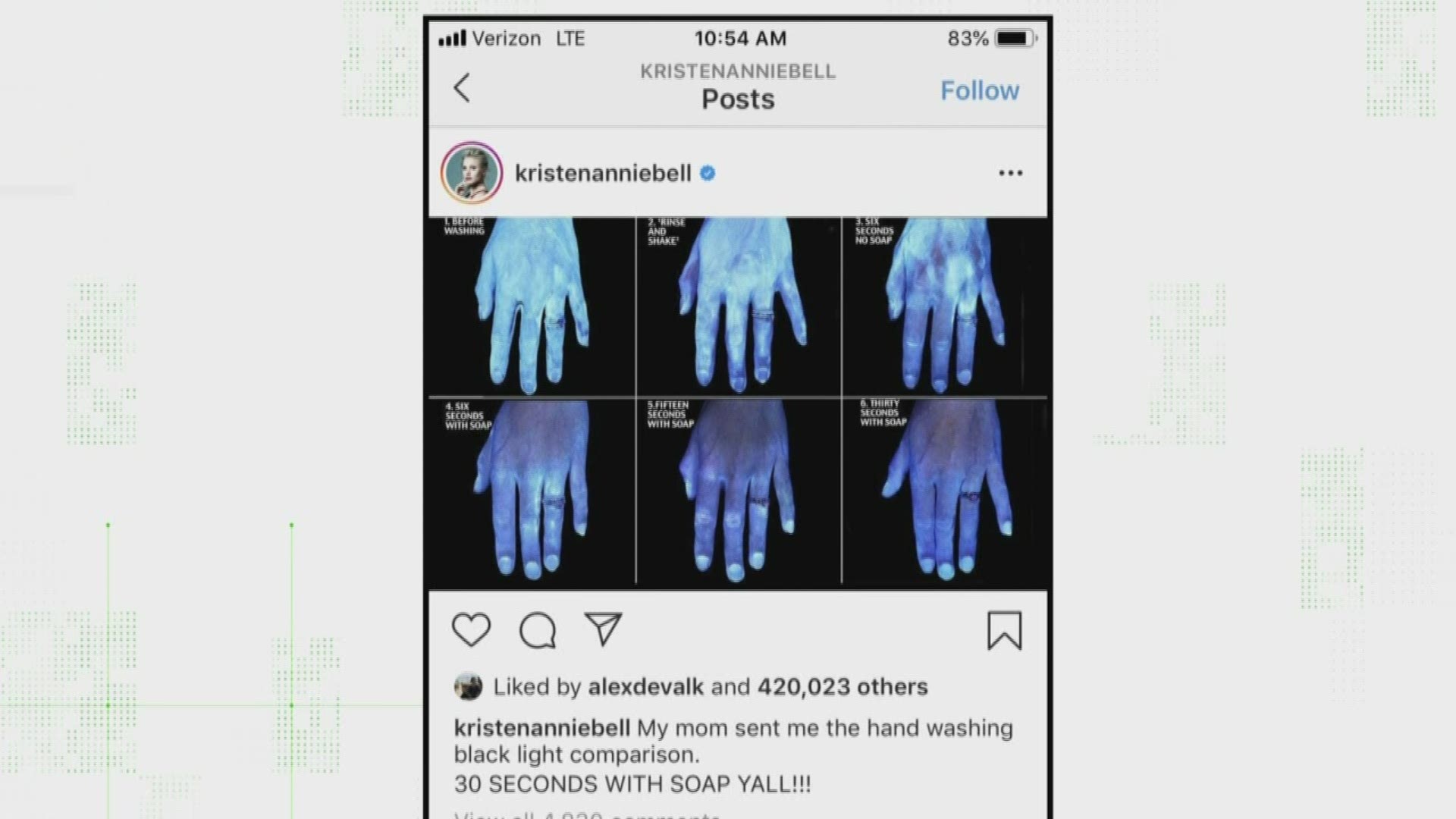MINNEAPOLIS — A collage of six photos has been circling the internet, detailing what's left on your hands after washing them for different lengths of time.
The pictures show a hand under UV light before hand washing, after a 'rinse and shake', after six seconds of washing without soap, after six seconds of washing *with soap, after 15 seconds with soap, and after 30 seconds with soap.
So where did it come from and is it true?
We traced it back to this Daily Mail article from 2015. The author says she conducted an experiment using a UV camera and something called Glo Germ to test different hand washing techniques.
We spoke about it with Dr. Craig Hedberg, professor in the Division of Environmental Health Sciences at the U of M's School of Public Health.
"There have been these techniques using powders, that fluoresce that can be put on the hands and demonstrate the effects of hand washing, and I think that does nicely demonstrate why it's important that people use the right techniques," he said.
The post implies you get the best results by washing your hands with soap and water for 30 seconds.
The CDC says you should wash for at least 20 seconds.
Hedberg says that's a good rule of thumb, but the length of time you wash really depends on how dirty your hands are.
"It's not a magic number. How effective your hand washing is might depend partly on how dirty your hands are to start with, or if your hands are really greasy, then you might need to work them longer to get everything off," he said.
The reason washing your hands for the correct length of time is so important? Hedberg says the friction from moving your hands back and forth with soap actively releases the bacteria.
"You wet your hands, and then you lather them up with soap, and you work your hands around, and what that does is the friction and the soap help to release the bacteria from the surface of the skin, and then at the end you can rinse that off," said Hedberg.


